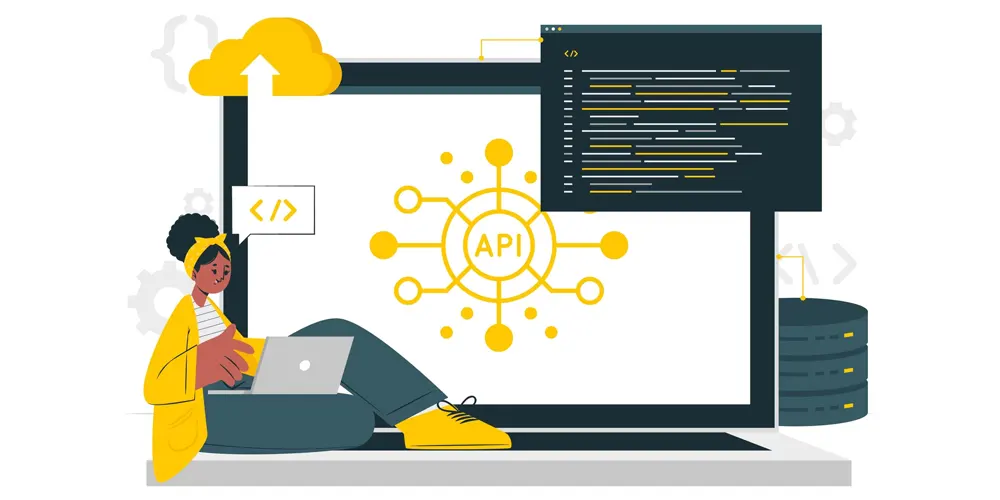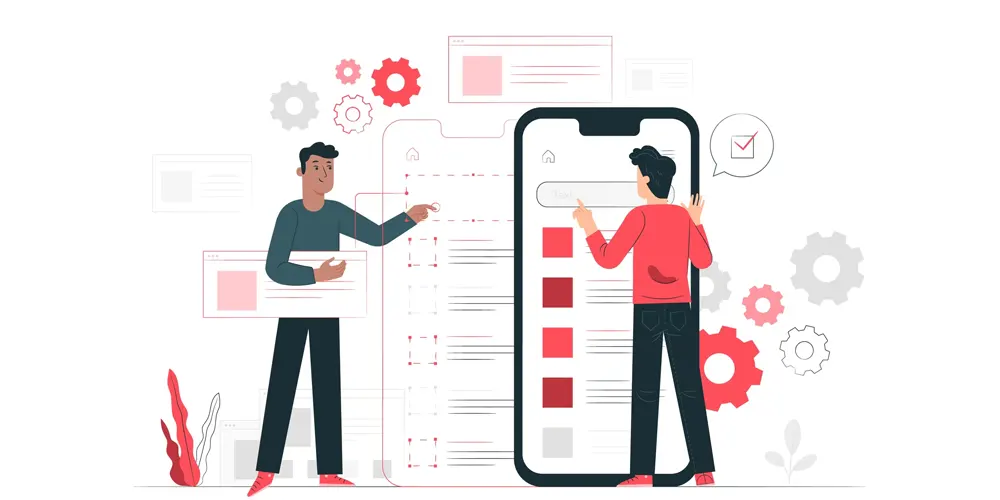From Cost Savings to Mobility - 15 Benefits of Web Phones for Businesses
Imagine juggling multiple tasks as a small business owner. One minute you're on the phone with a customer, the next you're checking your email. Then you’re trying to schedule a meeting. It's overwhelming. But there is a solution. Enter web phones!
Web phones are internet-based phone systems that offer cost savings and streamline communication.
You can access your phone system from anywhere with an internet connection. Make and receive calls, send text messages, and even conduct video conferences. No expensive hardware or complex installation is needed.
In terms of capabilities and features, web phones have a lot to offer. You can even set up virtual phone numbers to expand your business reach and provide excellent customer service.
In this blog post, we'll explore 15 of the most significant benefits that web phones offer to businesses.
Let’s dive into the benefits and understand them, shall we?
1. Cost Savings

Web phones and VoIP bring a lot of benefits to the business in the form of savings on communication expenses.
They use the internet to make and receive calls, which can be significantly cheaper compared to traditional phone systems. This lowers call rates and eliminates the need for dedicated phone lines, resulting in cost savings on line rental fees.
Additionally, web phones require less hardware, which lowers equipment costs and maintenance fees. They also offer scalability, which allows businesses to add or remove phone lines as required.
Thus, web phones provide businesses with a more cost-effective communication solution compared to traditional phone systems.
2. Accessibility

Enhanced accessibility is another benefit that web phones have on offer for businesses. This is possible by providing a more flexible and mobile communication solution.
With web phones, employees can make and receive calls from anywhere with an internet connection. This allows them to work remotely or while on the go.
Businesses thus enjoy greater flexibility, as employees are not tied to a specific location or phone line. Additionally, web phones often come with advanced features such as call forwarding, voicemail-to-email and more.
Such features make it easier for employees to stay connected and accessible to clients and colleagues. Improved accessibility can lead to increased productivity and customer satisfaction.
3. Convenience

To say Web phones are convenient to use would be an understatement. Web phones act as unified communication systems that can integrate with other digital platforms. This further adds to the convenience being offered to businesses.
With web phones, employees can make and receive calls, send and receive messages, and host video conferences from a single device or platform.
This eliminates the need for separate communication tools and simplifies the communication process. Thus communication becomes more efficient and convenient for employees.
Additionally, web phones often come with many advanced features. This includes features such as call routing and auto-attendants, which streamline call management and improve customer service.
Furthermore, web phones are easy to set up and use, reducing the need for technical support and training. Thus, businesses can enjoy a communication solution that simplifies the communication process, improves customer service, and increases productivity.
4. Multifunctional

Sometimes I wonder if web phones ever thought how much was too much? I mean take a look at everything they have on offer in terms of functionality. Web phones provide a wide variety of communication options and features on a single device or platform.
With web phones, employees can make and receive calls, send and receive messages, host video conferences, and access other communication tools from a single device.
This makes it easier for employees to stay connected and productive. Such high levels of multifunctionality help streamline communication.
Additionally, web phones often come with advanced features such as call recording, call forwarding, and voicemail-to-email. This further makes it easier for employees to manage and fulfil their communication needs.
Web phones also integrate with other digital platforms such as CRM and email, further enhancing their multi-functionality.
5. High-quality Audio

As a business, the last thing you want is bad audio quality while in an important conversation with a high-value client. Imagine missing an important detail due to bad audio. Such small blunders can easily derail an important business deal.
Web phones offer businesses high-quality audio calling by utilizing digital audio technology to provide clear and crisp audio.
Web phones use internet protocols to transmit voice data. This allows for higher bandwidth and less interference compared to traditional phone systems that use analogue technology.
The results? You benefit from a clearer and more reliable audio quality during calls. Additionally, web phones often come with advanced audio features such as noise reduction and echo cancellation, further enhancing the audio quality.
Furthermore, web phones can integrate with other audio devices such as headsets and speakerphones. Using these additional audio options, businesses can further enhance the audio quality and the overall experience.
6. Integration

You see, web phones aren’t like your average PSTN phones, they’re smarter. They don’t just allow you to talk to other people, they themselves can talk to other applications and platforms.
This is possible thanks to the web phones being digital and Application Programming Interfaces, commonly abbreviated as APIs.
APIs allow businesses to connect their web phones with other business software and platforms. This includes CRM systems, helpdesk software, project management tools and more.
This integration provides businesses with a more streamlined communication process. Employees can thus work more efficiently by leveraging technology and be more productive.
API integrations enable businesses to automate manual tasks and processes. This includes call logging and customer data entry, record keeping etc. Thus, eliminating the need for manual data entry and increasing accuracy.
Additionally, web phones can integrate with other digital platforms. This is not limited to email or instant messaging clients, through APIs. Thus, providing businesses with even greater communication flexibility.
7. Privacy

While I would like to say that most businesses have nothing to hide. However, we’ve had people like Snowden and Assange shed light on how governments keep snooping on everyone irrespective of the threat level.
So privacy has become a top concern for a lot of individuals and even businesses. Web phones can address these privacy requirements quite capably.
As web phones operate over Internet Protocol, they can use different ways to establish secure lines of communication. This way you can protect your business’s sensitive information.
Traditional phone systems can be vulnerable to wiretapping and eavesdropping. Web phones use encrypted communication protocols that make it difficult for hackers to intercept and access calls.
Additionally, web phones often come with advanced security features such as access controls and firewalls. This further protects against unauthorized access.
They also allow businesses to host their own communication systems. Such an ability provides greater control over their communication channels and data. This reduces the risk of third-party data breaches and ensures that sensitive information is protected.
8. Mobility

What do web phones need to function? A device to access them and a good internet connection. If you have these two, you can take along your communication suite wherever work will take you!
With web phones, employees can make and receive calls, send and receive messages, and host video conferences from their mobile devices or laptops. allowing them to work from home, on the go, or from remote locations.
This provides businesses with greater flexibility and allows employees to stay connected and productive, even when they are not physically in the office.
Additionally, web phones often come with features such as call forwarding and find me/follow me, which allow employees to redirect calls to their mobile devices or other numbers, further enhancing mobility.
Moreover, web phones can integrate with other mobile communication tools, such as instant messaging and email, providing businesses with even greater communication flexibility.
Overall, web phones offer businesses mobility benefits that improve productivity and allow employees to work from anywhere with an internet connection.
9. Easy to Set Up

You may think modern technology has made everything easy in terms of communication. However, I bet you haven’t seen how complex it is to set up and operate an on-site PBX system.
I would go as far as to say that sending out a pigeon with a message is far easier than setting up an on-site PBX system all by yourself.
Even traditional phone systems require extensive hardware and cabling installations. Compared to that web phones only require an internet connection and a compatible device to access and operate it.
Additionally, most web phone providers offer plug-and-play setup options. This means that businesses can easily connect their web phones to their existing internet network. This eliminates the need for additional hardware or technical expertise.
Moreover, web phones offer web-based interfaces that are easy to navigate and configure. Businesses are thus able to set up and manage their phone systems easily and efficiently.
10. Environmentally Friendly

The last few years have proven to us that global warming and climate change are no hoaxes. Humankind is at the mercy of mother nature and we need to get our act together. This means reducing our carbon footprint wherever possible.
Compared to traditional phone systems, web phones consume less energy and require fewer resources. Resources such as copper wiring, dedicated wide-scale communication infrastructure and other hardware components are eliminated.
Additionally, web phones enable businesses to reduce travel and commuting. As team members can work remotely and collaborate, thereby reducing greenhouse gas emissions and air pollution.
Moreover, web phones offer features such as virtual meetings and webinars, which further reduce the need for in-person meetings and conferences. This not only reduces carbon emissions but also saves businesses time and money.
Thus, with one virtual meeting at a time, web phones are helping businesses go greener.
11. No Hardware Required

Expanding upon the last point, any traditional phone system required too many things to operate. While telephone poles and telephone exchanges have become an uncommon sight, those still exist.
The same is the case when it comes to the handsets. As kids, we had multiple physical telephones in our house. Some wired and some wireless with their docks. Web phones require no such hardware to operate.
Web phones operate using software and are hosted on servers. This means that businesses don't need to invest in costly hardware, such as desk phones or PBX systems.
Instead, employees can use their existing devices, such as laptops or mobile phones, to access the web phone system. This eliminates the need for businesses to maintain and update physical hardware too.
Let’s also not forget that you also eliminate any costs associated with maintaining these systems. While on-site PBX systems are modern, they’re quite notorious in terms of the maintenance they require.
Additionally, web phones offer flexible and scalable solutions. This allows businesses to easily add or remove users without needing to install new hardware.
12. Flexible Call Routing

With traditional phone systems, you had no option but to remember extensions to reach the right person. PBX systems made this easy with IVRs and auto attendants. Web phones offer similar capabilities, if not better, minus the hardware and complexities.
Web phones allow for flexible call routing by providing a range of call routing options. These can be extensively customized to meet the needs of the business.
With web phones, businesses can set up call routing rules based on time of day, caller ID, and other criteria. This enables them to route calls to specific extensions or employees easily.
Additionally, web phones offer features such as call forwarding and find me/follow me. These allow businesses to redirect calls to mobile phones or other numbers, ensuring that calls are never missed.
Moreover, web phones also offer virtual attendants. These attendants can greet callers and provide menu options. Thus allowing callers to route themselves to the appropriate department or employee.
This provides businesses with greater control over their call routing, ensuring that calls are directed efficiently and effectively.
13. Increased Productivity

I believe it is safe to say that your team members would be way less productive if they had to manage all forms of communication all by themselves. But then again, without communication, things cannot move ahead.
Web phones simplify communication for everyone. Using a web phone means every team member has one less thing to worry about and manage. With the communication needs and duties being well taken care of, they can put more effort into actual work.
With web phones, employees can easily transfer calls to other employees, access voicemails and call logs, and initiate conference calls.
Additionally, web phones offer features such as presence and instant messaging. With this employees can see the availability of their colleagues and communicate with them accordingly in real time.
This enables employees to more quickly and easily connect with the right person, collaborate on projects, and ultimately lead to increased productivity.
Let's also not forget all the things web phones integrate with. We have Customer Relationship Management (CRM) systems, project management tools and more. All of this leads to a refined and streamlined workflow, resulting in increased productivity.
14. Advanced Call Features

In terms of features, web phones are like a fancy and good all-you-can-eat buffet. I bet there is way more than you can make use of.
Web phones provide a wide range of tools and functionalities that enhance communication and collaboration.
With web phones, businesses can take advantage of features such as call recording, call monitoring, and voicemail-to-email. These allow for better call management and record keeping.
Additionally, web phones offer video conferencing, screen sharing, and instant messaging. With these, employees can collaborate more effectively while working from remote positions.
Furthermore, web phones provide advanced call-forwarding options, which can automatically redirect calls to other numbers or devices. This ensures that employees are always reachable.
Web phones also offer call analytics, allowing businesses to track and analyze call data. Making data-driven decisions about their communication strategies, thus, becomes easy.
15. Scalable

Imagine if scaling up communication capabilities was as easy as stacking legos on top of each other. Well, with web phones, it actually is this easy. Of course, you don't have to stack them on top of each other but you get the idea right?
Web phones offer exceptional scalability and flexibility in terms of communication requirements. This means the system you deploy using web phones can easily adapt to the changing requirements of any business.
With web phones, businesses can easily add or remove lines. Adjust their phone system as needed. All of this can be done without the need for extensive hardware upgrades or installations.
Thus, web phones become a highly scalable solution, suitable for businesses of all sizes, from small startups to large enterprises.
Additionally, web phones offer advanced features and functionalities that can scale with the business. Businesses can customize their phone system and add new features as their needs evolve.
Furthermore, web phones are highly interoperable, meaning they can easily integrate with other business applications. With this, businesses can build a custom communication solution that fits their unique needs.
With that, we’re at the end of a long list of benefits that web phones offer businesses!
Ending with
Communication will always remain an important part of any business undertaking. This will hold true no matter how extensively business operations are automated.
We’ve covered and explained 15 benefits that your business can enjoy by making use of web phones. These benefits vary right from cost savings to ease of use and other unique propositions.
I hope this article grants more clarity to you if you were out searching for a communication solution. Chances are if you opt for a web phone, you may discover benefits that may not even be listed in this article.
Happy Communicating!
























































































































